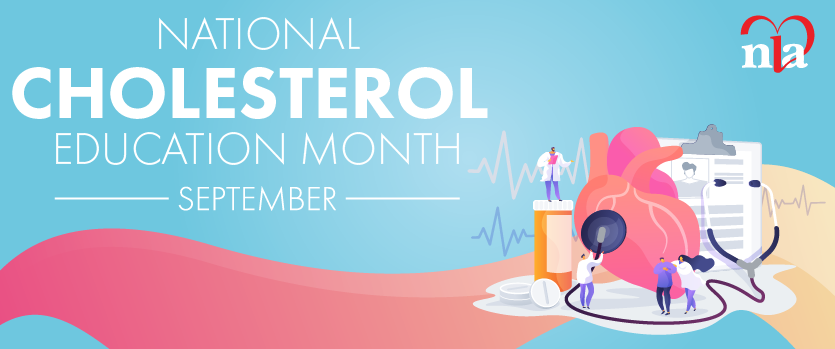Summer 2022 LipidSpin Articles
|
Antonio M. Gotto Jr., MD, DPhil, FNLA |
The Lipid HypothesisThe lipid hypothesis states that elevated plasma cholesterol, more specifically, LDL cholesterol, has a causal role in the development of coronary heart disease and other cardiovascular diseases. This hypothesis has been debated for over 150 years. Cholesterol was first discovered in bile and in the gallstones by Poulletier de la Salle in 1769 and rediscovered by Michel Eugene Chevreul in 1815. The latter coined the name “cholesterine” which was shown to be present in bilestones. In... more |
|
John R. Guyton, MD, FNLA W. Virgil Brown, MD, FNLA |
Origins of the NLAIn 1987, to combat the number one killer of American people, cardiovascular disease, the National Cholesterol Education Program (NCEP) released Adult Treatment Panel Guidelines to coincide with the release of the first FDA-approved statin, lovastatin. By 1996, the goal was clear: reduce LDL-C to less than 100 mg/dL in all people with known coronary disease or major risk factors such as diabetes mellitus. This seemed achievable on paper, but a physician practice assessment revealed that only... more |
|
Penny M. Kris-Etherton, PhD, RD, FNLA Anne C. Goldberg, MD, FNLA Joyce L. Ross, MSN, CRNP, CLS, FNLA Vera A. Bittner, MD, MSPH, FNLA |
The Care Team FocusThe Southeast Lipid Association originated as an extension of an annual southern academic forum (Southeastern Lipid Conference) based on the science of cholesterol metabolism. A group of well-known academic physicians convened in 1997 to discuss the potential of starting a lipid association. The founding group of physicians had the vision to form an association that would become focused on the practical application and integration of science into clinical lipidology practice. It was during... more |
|
Carl E. Orringer, MD, FNLA Joseph J. Saseen, PharmD, CLS, FNLA |
Cholesterol Guidelines and NLA InvolvementThe National Lipid Association remains focused on enhancing the practice of lipid management in clinical medicine, with guideline education and participation as a critical part of our efforts. NLA represents the intellectual leadership on the blood cholesterol and triglyceride space. NLA leaders and members are routinely present in the development of cholesterol guidelines and expert consensus pathways, including Kim K. Birtcher, PharmD, MS, FNLA, Roger S. Blumenthal, MD, FNLA, Lynne T.... more |
|
Terry A. Jacobson, MD, FNLA Kevin C. Maki, PhD, CLS, FNLA |
The Significance of NLA Scientific Statements and Clinical PerspectivesSince its inception, the National Lipid Association has produced significant contributions to the scientific literature, creating practical guidance for Clinical Lipid Specialists, as well as the general clinical and public health communities. These publications have cemented NLA’s prominence in pursuit of its mission to enhance the practice of lipid management in clinical medicine. Several of our scientific statements have led to tangible changes in clinical practice, national clinical... more |
|
JOSEPH J. SASEEN, PharmD, CLS, FNLA |
A New Vision for the NLAThe National Lipid Association owes much of its success to the founding lipid legend members, not only for their dedication to the organization but for hiring Chris Seymour as their Executive Director. When the Southeast Lipid Association began in 1997, John R. Guyton, MD, FNLA, had heard of Chris Seymour’s abilities through his prior directorship of the American Association of Clinical Endocrinologists. A Navy reservist, Chris Seymour’s basic philosophy and work ethic matched those who... more |
|
Peter H. Jones, MD, FNLA Don. P. Wilson, MD, FNLA Dave L. Dixon, PharmD, CLS, FNLA Chris DeVille |
NLA's Future Education EndeavorsFrom its early beginnings, piecemealed from a variety of medical school textbooks to the latest information readily available at the click of a button, the NLA has experienced tremendous growth in the education of its members, colleagues, and the general public; and recognizing those who have achieved excellence through certification. In the early years, clinicians were provided state-of-the-art recommendations for clinical practice, including relevant research findings, practice insights,... more |
|
Anne C. Goldberg, MD, FNLA Alan S. Brown, MD, FNLA Carol Kirkpatrick, PhD, MPH, RDN, CLS, FNLA Daniel E. Soffer, MD, FNLA |
The Meaning of MentorshipMentorship is, and always has been, a crucial component of the NLA. As a growing field, NLA members pride themselves on educating their fellow colleagues, reaching out to up-and-coming clinicians, and creating better health professionals for patients. Below you will find the experiences and thoughts of members on mentorship in the NLA: “From its inception, the culture of the National Lipid Association has encouraged clinicians and scientists from many disciplines to talk with each... more |
|
Kaye-Eileen Willard, MD, FNLA Lynne T. Braun, PhD, CNP, CLS, FNLA |
Legacy and Outlook of LipidSpinLipidSpin is a journal filled with current, relevant, evidence-based information dedicated to lipid science and cardiovascular disease prevention, and is specifically directed towards meeting fundamental educational needs of the membership of the NLA. This year, we celebrate the journal’s 22nd birthday. Yes, LipidSpin is older than the NLA itself! Historically, the Southeast Lipid Association (SELA), whose existence predated the National Lipid Association, recognized the... more |
|
John R. Guyton, MD, FNLA |
Past and Future of the Journal of Clinical LipidologyFrom its very start in 2002, the National Lipid Association planned to pursue establishment of a scientific journal that would complement LipidSpin by publishing high level original research, case studies, influential reviews, and editorial commentary in clinical lipidology. Virgil Brown led the effort as we partnered with Elsevier, in our view the premier scientific publisher. The Journal of Clinical Lipidology (JCL) launched in 2007. Having Virgil as Editor-in-Chief, along with... more |
|
Anne C. Goldberg, MD, FNLA James A. Underberg, MD, MS, FNLA |
Expanding Projects and Popularity: Foundation of the NLAThe NLA established the Foundation of the National Lipid Association in 2008 when Dr. Paul Ziajka and the late Dr. Ralph Vicari dissolved the Florida Lipid Foundation and donated its funds to the NLA. The mission of the Foundation is to improve the welfare of patients and families affected by cholesterol and triglyceride problems. The NLA Board elected Anne C. Goldberg, MD, FNLA as president of the Foundation. During her presidency, Dr. Goldberg helped lead the familial... more |
|
Dave L. Dixon, PharmD, CLS, FNLA James A. Underberg, MD, MS, FNLA |
The Future of NLA Scientific Statements: To Infinity and Beyond!The NLA has long prided itself on developing timely and relevant scientific statements, which is also a key strategy to help the NLA achieve its mission, “to enhance the practice of lipid management in clinical medicine.” Developing scientific statements is an important responsibility of the NLA, and its members have dedicated many hours to it as these documents take a herculean effort to produce. As we look ahead, NLA scientific statements will become even more important given the rapid and... more |
|
Laney K. Jones, PharmD, CLS, FNLA |
Times of New Technology: TelehealthTelehealth, defined as a virtual platform to perform medical care services, has become an integral part of how we conduct healthcare in the last decade. The rapid uptake of telemedicine can be largely attributed to the COVID-19 pandemic that has overtaken our lives for the past two years. However, the pandemic has not been the only contributor, others include advances in patient access to and healthcare’s investment in technology. Three types of telemedicine services exist: 1) synchronous –... more |
|
Christie M. Ballantyne, MD, FNLA |
Times of New Technology: TherapiesThe causal relationship between blood cholesterol and atherosclerotic cardiovascular disease (ASCVD) required many decades of research to establish and validate, and initial treatments focused on diet. However, in the last 50 years, and particularly the last 10, we have made great strides in lipid-lowering therapies that have been accelerated by the use of genomics for target identification and biotechnology for drug development. A brief timeline of therapies as approved by the United States... more |






.jpg)
.png)










